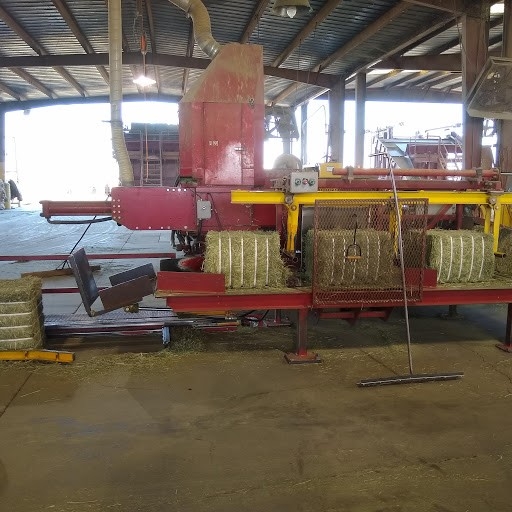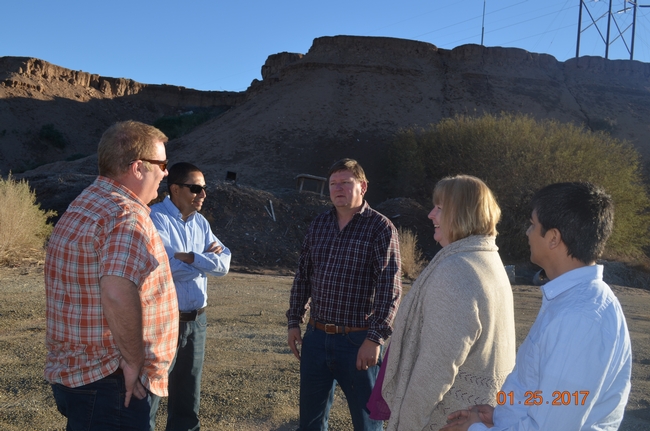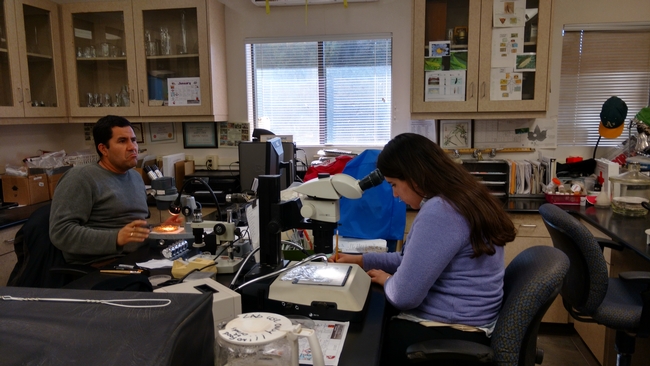- Author: Wendy Powers
The trip to Imperial County last week was interesting and full of contrasts. It started with a mini-shot of Wild Turkey on the flight, as a toast to the founder of Southwest Airlines. The memorial service was held while we were inflight and we observed a moment of silence before the toast. That alone was a first while inflight.
I learned more about the UCCE programs, including the increased funding support from partners to grow the successful FarmSmart program and some of the impressive statistics that demonstrate the strength of the 4-H program. Many on the combined UCCE/Desert REC team are new (less than six years with UC ANR). At least a few weren't part of the team yet during my last visit. But it's no surprise that there is noticeable growth in the reach of programs given the support from local clientele. After a tour of the facility, we had lunch with some local stakeholders and partners, including a recent chair of the County Board of Supervisors, the County Ag Commissioner, and one of our CARET representatives. Partners from San Diego State University, University of Arizona, and several leaders from a local university in Mexico (UABC) were able to join us.
We toured El Toro Land and Cattle and had a chance to see how they have grown their hay export facility and started using the new feed mill since I last visited. It seems odd to me that in the state that grows more alfalfa than anyone else, we also produce Bermuda grass hay. Few states can boast this. I learned that grain is added to hay bales (5%) for some clients and the hay is a combination of Bermuda, alfalfa and Klein grass. I suspect that makes for a complete feed for the cattle. I need to look a bit more into Kleingrass as that is new to me.
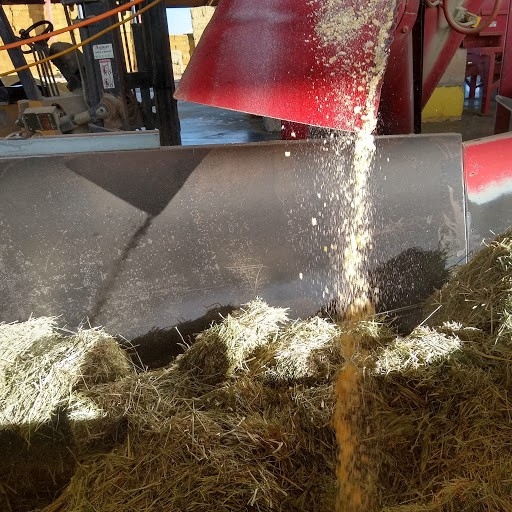
Who would have thought that any portion of the energy in Imperial County would come from hydroelectric? While the portion is small, but growing, and it's far from the largest hydroelectric plant I have visited, I was impressed to see such a thing at all. Admittedly, I have been to more hydroelectric plants than most, but I still enjoy seeing them.
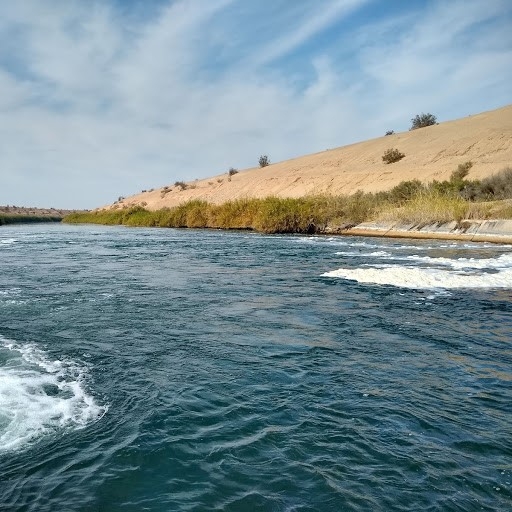
I am headed south again this week, after a meeting of the strategic plan goal owners. I hear there may be rain, making plans a bit uncertain. At some point, I expect it will be the government shutdown that interrupts travel plans rather than weather.
- Author: Wendy Powers
Admittedly, when I have thought about southern California in the past, I have imagined that once you moved east of the crowds and beaches it was a barren desert sans camels. But UC ANR personnel in Riverside and Imperial Counties have shown me that there is so much more to the far southeastern part of the state! The Coachella Valley, in particular, is just beautiful. From what seems like an enormous amount of cilantro and dill to orchards, rows of 7-acre greenhouses, and leading table grape production, the 60+ crops not to mention feedlot inventory, meat processing and hay acreage have changed my impression of those counties and opened my eyes to some of the challenges and opportunities in the region. I want to thank Jairo Diaz, Oli Bachie, Jose Aguiar, Eta Takele Carmen Gispert, Sonia Rios, and Pratap Devkota (new Advisor in Imperial County!) for helping me get up to speed as well as Vince, Scott and Jeff for letting us stop by their operations.
Clearly I'm not the only one intrigued by all of the production in the desert. While we were at the Imperial UCCE and REC facility, there was a group there as participants in the winter tour series. I learned this is part of the FARM SMART program; an initiative that spans youth development, community nutrition, gardening and agritourism. Overall, it's a fascinating program and a novel way to tie all the strengths of UCCE together while reaching a number of target audiences.
Chris Greer, Oli, Pratap, Jairo and I also spent some time with David Bradshaw from the Imperial Irrigation District to see firsthand the New River Wetlands project, designed to alleviate degradation of the Salton Sea. We stood at the edge of the Salton Sea but water levels are clearly low already and projected to go even lower in the near future.
The trip to the desert was enlightening, as much because of what was growing in the desert as because of the insights it provided about how important our partnerships across the borders (state and national) are in that region. Repeatedly I heard that clientele include growers from El Centro, Indio, Yuma and Mexicali, alike. And students from Mexico are an important part of the research underway. The strong partnerships and stakeholder support became obvious when I was able to meet so many special guests that attended lunch at the Imperial UCCE and REC facility. Guests included the local Farm Bureau, area growers, NRCS and commodity group representatives, and administrators from a university in Mexicali. A great turnout and a great meal prepared by the personnel.


